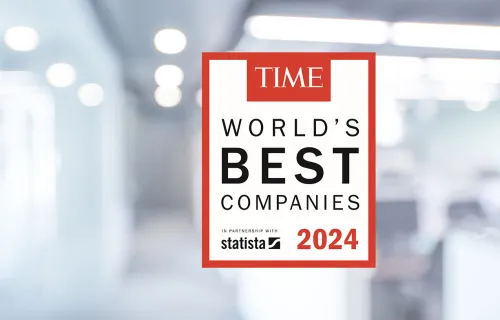Technology migration is something almost every organisation is tasked with at one point or another. And over the past 30 years, Microsoft Office has established itself as an integral part of the enterprise technology stack, with many of its tools becoming de-facto applications necessary for optimal business performance.
More recently, Microsoft 365 has emerged from the cloud-based offering of Microsoft Office, to become a complete suite for office productivity with products such as MS Teams, the Graph API, Tasks by Planner and more.
Coupled with significant cost benefits, world-class security and powerful cross-platform functionality, the real question is: why would you not want to migrate to Microsoft 365?
Here I examine the benefits, the challenges to consider and my experience with CGI on implementing Microsoft 365.
Why make the move?
As cloud technology advanced, Microsoft Office transformed to provide consistent functionality across both the cloud and the computer. This drove enterprise performance and productivity: after all, where would be today without Outlook, Word, Excel and PowerPoint?
Eventually, Microsoft 365 was designed, at its core, “to help you achieve more with innovative Office apps, intelligent cloud services, and world-class security".
Whilst there are several competitors in this space, Microsoft 365 has rapidly become the leading cloud-based solution for collaboration, teamwork and office products.
As a constantly evolving product, Microsoft 365 (for Enterprise) “helps people and teams do their best work with the apps and experiences they rely on every day to connect, collaborate, and get work done from anywhere".
And it does deliver on these promises, when properly implemented.
The inherent challenges of migrating to any new technology in a business
The Microsoft 365 platform offers vast capability for productivity, content and data management, content consumption insight, collaboration, work management and automation, all underpinned by a secured user management and rights management capability.
However, as is the case when adopting any new tool, businesses must be aware of common challenges faced when migrating to a different system or platform. They need to work with both their IT partner and their users to understand and follow appropriate procedures. Some of the issues I have encountered include:
- Content proliferation: When any content, data, files, objects are stored without structure, and are typically not controlled through content lifecycle
- Content duplication: When content and data appears in multiple places, leading to difficulties in identifying the controlled version of that content
- No single point of truth: When multiple/different versions of the same content is stored in multiple locations, causing excess storage as well as errors in locating the right version
- No information architecture (IA) or archaic / unadapted IA: This can lead to confusion as to the purpose or intent of that content, further leading to possible incorrect use of that content
- Desire to work "as we did before": When users of the platform have no intent or interest to leverage the benefits of the Microsoft 365 platform, and continue to operate in silos as they have always done
- Collaboration spaces not respecting content location or security level: Allowing for content to be viewed or shared to people who should not access it, or possible malicious actors
- No record management governance: When content is not stored according to company guidelines for audit purposes, using the correct retention policies
- Using Production as a playground: When tools and products are left open to everyone to experiment with, allowing anyone to create disorganised content and process automation flows, or delete controlled content. This leads to extra IT support needs and costs
All of the above issues are avoidable with user education, as well as the right approach to implementation.
Which brings me to my next point: Governance.
Proper governance is crucial
Like with any new technology adoption, we need to start with the right governance. Without an upfront, strong and enforced governance overarching the configuration and usage of the platform, Microsoft 365 can rapidly become a chaotic, non-secure environment.
A lack of clear security governance allows behaviours that compromise security. This can include:
- Sharing content (internally or externally) without the proper security controls
- Inviting users to provide collaboration areas without considering all the assets of that collaboration area (chats, posts, documents, planner tasks, etc.)
- Setting all users as administrators of a site or team, as an "easy way" to give them access to everything
- Lack of training in understanding the core security concepts of the Microsoft 365 platform
- Giving people permission to change and publish content without approval
- Unrestricted access to internal objects in the Microsoft 365 platform, which can be modified through automation
But whilst governance is imperative, it must not be seen as the scary dictator of a technology platform imposed by IT. Rather, it is a set of rules for service consumption, reviewed on a periodic basis to ensure it best serves the users of that platform. Governance exists to help users, not limit them.
My experience shows that organisations with strong, adapted and adaptable governance easily and effectively lead end users to successfully adopt the Microsoft 365 platform and new ways of working.
CGI will ensure you reap the maximum benefits of Microsoft 365
When clients engage CGI to help them move to a new technology stack – especially a platform as vast as Microsoft 365 – they know they’re getting expert advice. We have done this before. We understand the red flags to look out for. And we are here to help avoid the pitfalls of such a large adoption project, and deliver success.
Through CGI’s Client Partnership Management Framework (CPMF), we make use of the best processes and tools available to help our outsourcing clients boost efficiencies and ensure quality. We cover every aspect of our IT outsourcing engagements within this framework, including service offerings, contract negotiations and service delivery.
This enables us to ensure the best outcome to a Microsoft 365 platform adoption and migration project, avoiding the implementation and security risks discussed in this article.




